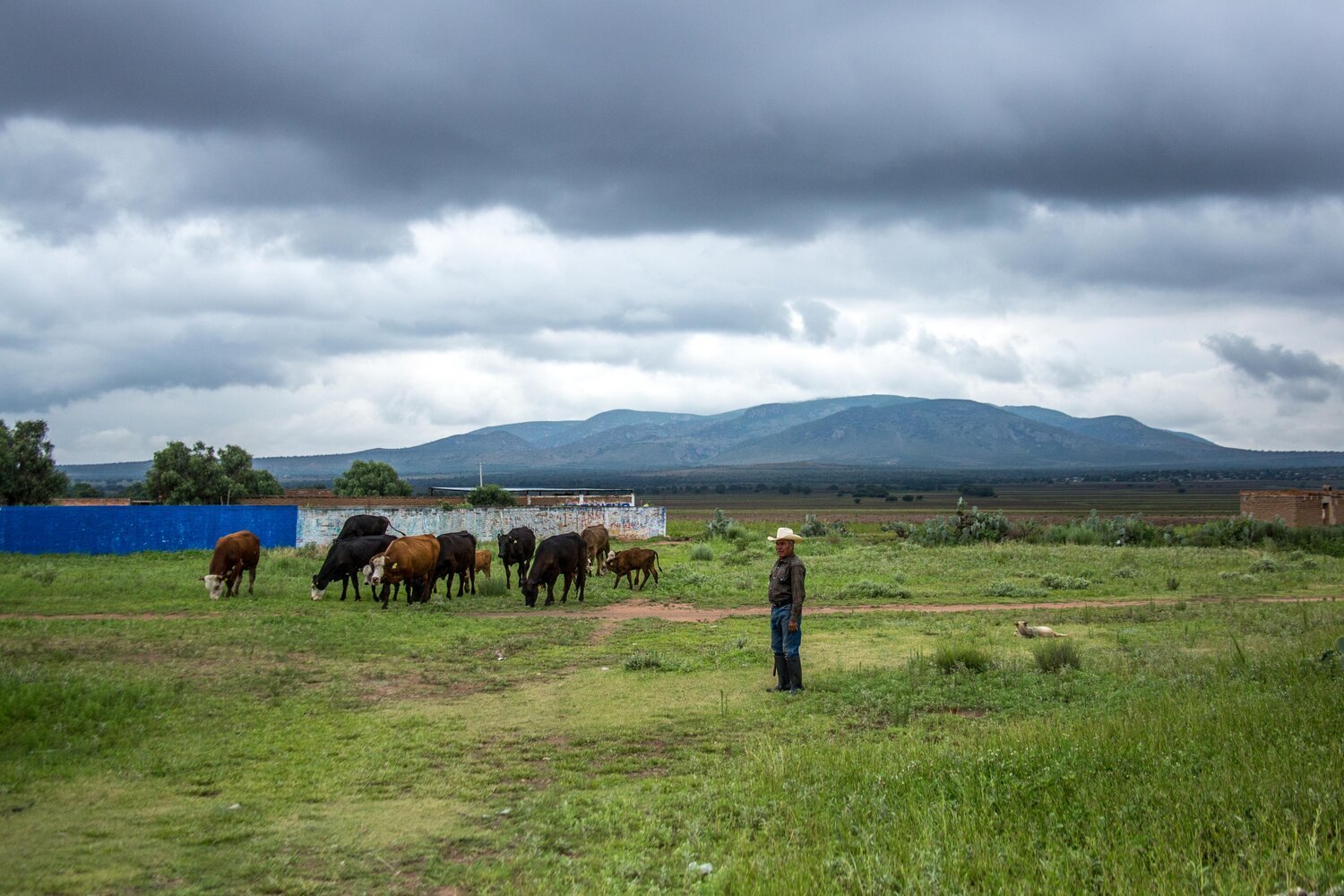THE
COW
From the cattle that once passed through Chicago’s Stockyards to the dairy cows that roam the plains, the cow has always been an integral part of the Midwest. It’s an unofficial symbol, not only for the food it provides but also for the farming and agriculture that is central to life in the area. The cow is similarly important to life in La Haciendita, providing milk, cheese, and beef for the families in town, and often a better way of life.
This was the case for the Yepez family. When Tirso, the patriarch of the family, worked as a bracero in Texas in the early 1960s, his wife Eusebia did her best to stretch the earnings he sent every month. Alone with ten children, Eusebia ran the household while Tirso was away. She’d walk for miles for drinking water, fed the chickens, and raised their children. Still, she felt she needed to find a way to help her husband. So one day, she decided to buy a cow.
For the next couple of years, the cow proved a solid investment. Not only did it provide the family with necessary milk, it allowed her to make cheese for her to sell. It also bore four calves, helping fund the family’s eventual move to Ocampo, a nearby town that provided higher schooling for the children. But more than what it provided, the cow became a symbol to the family, representing the tenacity and resourcefulness of the Yepez beloved matriarch.



